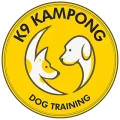
We’re Fetching Some Updates!
Our site is currently undergoing a little training of its own we’re making improvements to serve you and your dog better.
Please check back soon we’ll be back up and wagging in no time! In the meantime, if you have any questions or need to get in touch, feel free to contact us at k9kampong@gmail.com | Su Lin: +65 9028 0121 | Kimberly: +65 9152 6932 or follow us on @k9kampong_dog_training
Thanks for your patience and pawsitive vibes!
